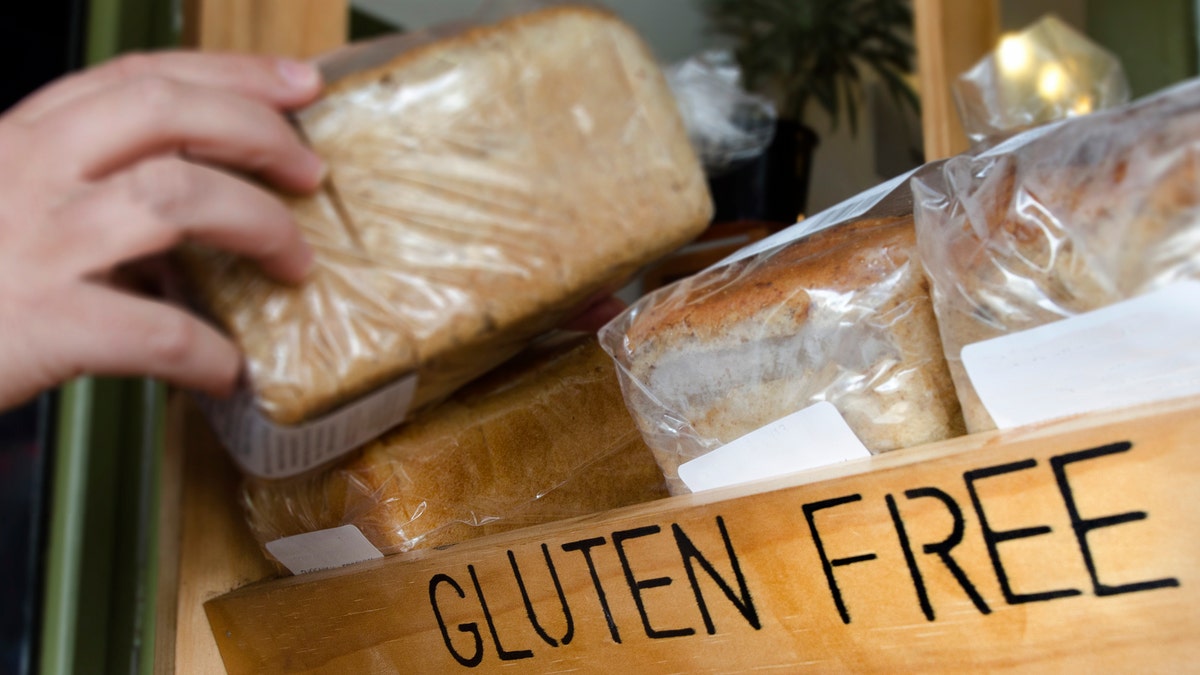
A woman hand picks up a Gluten Free loaf of bread. (iStock)
Some foods that don't appear to contain wheat or gluten based on package labeling may still have trace amounts of these ingredients, a company-funded study suggests.
Researchers tested 101 foods sold in the U.S. that didn't include ingredients known to contain gluten, such as wheat, barley, rye, malt or brewer's yeast. These foods were not labeled "gluten-free" - but consumers might assume they were gluten-free, because gluten-containing substances weren't on the ingredient list.
Some of the products did have warning labels suggesting they might contain gluten. Among the 87 products that didn't have such advisory warnings, however, 13 items, or 15 percent, tested positive for gluten.
The tests were done through Gluten Free Watchdog, a company that charges monthly subscription fees for gluten testing reports.
"In our research, the use of an allergen advisory statement for wheat on products not labeled gluten-free but appearing to be free of gluten-containing ingredients was not a useful predictor of gluten content," said lead study author Tricia Thompson, founder of Gluten Free Watchdog.
The study sheds light on the limits of so-called allergy advisory statements, voluntary information on U.S. food labels that notes, for example, when foods are processed in the same facility as wheat or nuts.
"Allergen advisory statements are voluntary and not currently defined by any federal regulations," Thompson said. "Some manufacturers use these statements to alert consumers to processing practices that may result in cross contact with allergens; many manufacturers do not."
U.S. Food and Drug Administration guidelines require packaged foods labeled "gluten-free" to contain less than 20 parts per million (ppm) of gluten. The goal of these rules is to limit gluten exposure for people with celiac disease.
About one in 100 people have celiac disease, in which consumption of gluten triggers an autoimmune response that damages the small intestine. The damage interferes with the absorption of nutrients from food. Left untreated, the condition can lead to complications such as malnutrition, low bone density, lactose intolerance and infertility.
The current study looked at a variety of grocery items including cereals, spices, teas, candy, beverages and baked goods.
Fourteen of these items did include allergy advisory statements for wheat or gluten on the label and only one tested positive for gluten, researchers report in the European Journal of Clinical Nutrition, online September 14.
Among the 87 products without allergy advisories, 74 contained little or no gluten. Another nine items contained gluten in amounts ranging from at least 5 ppm but less than 20 ppm, and four foods had at least 20 ppm of gluten.
The study is small, and the findings are not representative of all foods sold in U.S. stores, the authors note. It's also impossible to tell where in the food production line these foods were contaminated with gluten, they point out.
In addition, the study lacks data on how consumers might interpret the information on food labels.
When consumers see "gluten-free" they can trust that means no more gluten than allowed by the FDA, said Marianne Smith Edge, a registered dietician and former president of the Academy of Nutrition and Dietetics.
"However, the precautionary label statements 'may contain . . .' do provide uncertainties for consumers as regulations do not currently exist to ensure standardization," Smith Edge, who wasn't involved in the study, said by email.
Some products that tested positive for gluten in the study contained oats, which can be contaminated with wheat or barley at the agricultural level, during farming or in grain elevators, said Steve Taylor, a food allergy researcher at the University of Nebraska, Lincoln, who wasn't involved in the study.
Spices and teas also tested positive for gluten, and these items are often imported from countries that don't have stringent standards for gluten contamination. For these products, though, consumers are unlikely to use enough at one time to have an allergic reaction, Taylor added by email.
"I don't think that there is a problem," Taylor said. "Gluten-sensitive consumers should rely on products with gluten-free labels. They should be careful about grain-based foods that have no gluten-free statement. I don't think that they should worry about spices and tea."
Although people with allergies and sensitivities might not be affected by tiny amounts of gluten, people with celiac disease can still be harmed by it. Some may not feel sick when they eat foods with trace amounts of gluten, but long-term exposure can still lead to intestinal damage.




















